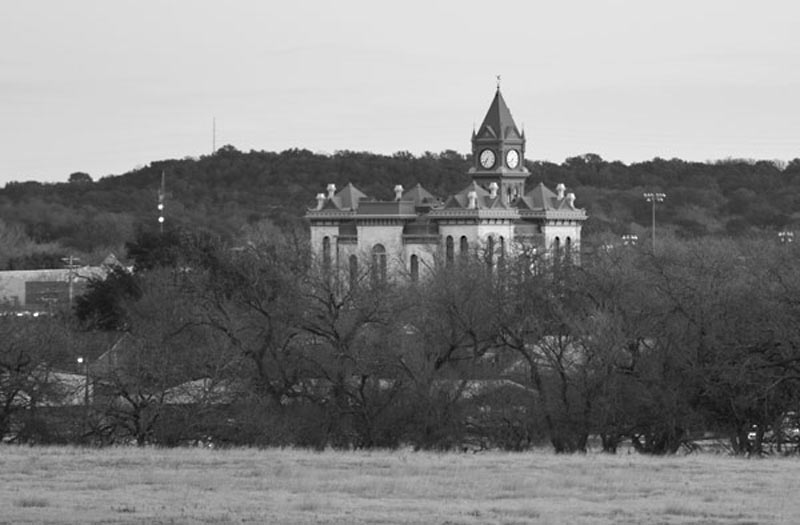Foreword
By Max Levy The Courthouses of Central Texas by Brantley Hightower University of Texas Press April 2015
 This remarkable book sensitizes us to what these courthouses have to say. Brantley Hightower’s harvest of keen observation, and his unusual way of depicting it graphically allow us an intense view of a subject never before assembled in this way. Untainted by nostalgia, his work broadens our thinking. Between the lines the reader may discern truths about Texas, about courthouse justice for some folks and injustice for others, certain fundamentals about urban design and the unraveling of cities today. What also emerges is this architectural principle: that a single building, distinguished by its setting and composure, crafted with care and designed with meaning for its community, can affect an entire town. Such buildings invite us to care about them, and then to literally care for them, so that they endure longer than other buildings, and even outlive ourselves.
Our forebears encountered a wild natural landscape. They built for physical shelter primarily. A little later on they added shelter for the eye and the mind and the heart, like these courthouses, which civilized town and countryside for miles around. Today we encounter a landscape of manmade wildness. Physical shelter we have pretty well in hand, but buildings for the eye, mind, and heart that can tame the mess we have created around us are rare indeed. The buildings in this book are quietly instructive in this regard.
Texans have long come over the rise and seen the courthouse silhouette up ahead. That image is always somehow reassuring, even though most of us today know these buildings only as passing acquaintances. How good it is to deepen these acquaintances after all these years.
Max Levy, FAIA
Dallas, Texas
October 2013
http://utpress.utexas.edu/index.php/books/hightower-courthouses-of-central-texas
This remarkable book sensitizes us to what these courthouses have to say. Brantley Hightower’s harvest of keen observation, and his unusual way of depicting it graphically allow us an intense view of a subject never before assembled in this way. Untainted by nostalgia, his work broadens our thinking. Between the lines the reader may discern truths about Texas, about courthouse justice for some folks and injustice for others, certain fundamentals about urban design and the unraveling of cities today. What also emerges is this architectural principle: that a single building, distinguished by its setting and composure, crafted with care and designed with meaning for its community, can affect an entire town. Such buildings invite us to care about them, and then to literally care for them, so that they endure longer than other buildings, and even outlive ourselves.
Our forebears encountered a wild natural landscape. They built for physical shelter primarily. A little later on they added shelter for the eye and the mind and the heart, like these courthouses, which civilized town and countryside for miles around. Today we encounter a landscape of manmade wildness. Physical shelter we have pretty well in hand, but buildings for the eye, mind, and heart that can tame the mess we have created around us are rare indeed. The buildings in this book are quietly instructive in this regard.
Texans have long come over the rise and seen the courthouse silhouette up ahead. That image is always somehow reassuring, even though most of us today know these buildings only as passing acquaintances. How good it is to deepen these acquaintances after all these years.
Max Levy, FAIA
Dallas, Texas
October 2013
http://utpress.utexas.edu/index.php/books/hightower-courthouses-of-central-texas
